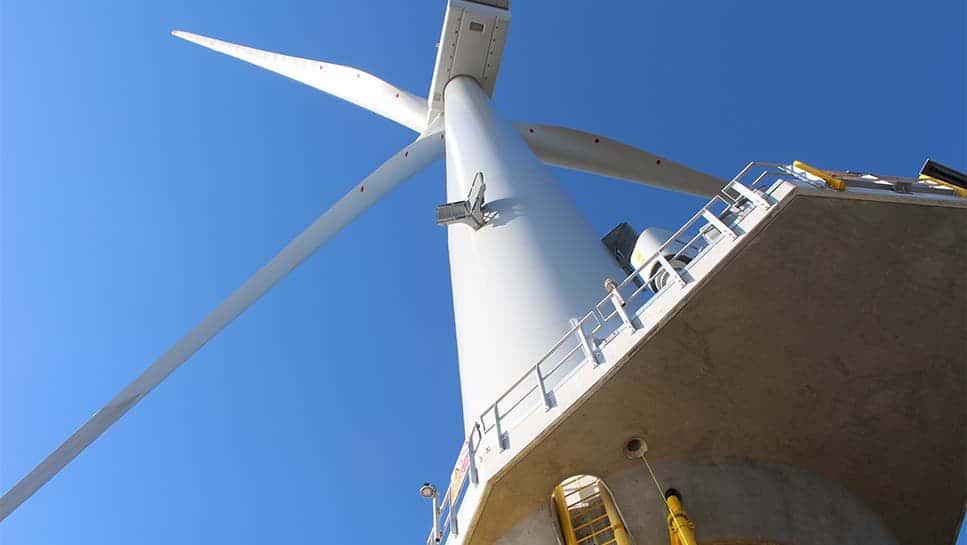The UK can now boast to have the biggest wind turbines ever seen — no fewer than 32 of them at that. These massive installations are set to propel wind energy towards becoming the cheapest source of energy.
There’s nothing little about the UK’s latest wind turbines. Taller than the London Eye, 34 of these metal giants were installed at the Burbo Bank wind farm seven kilometers from the Liverpool Bay area. Each stands 195 meters (640 ft) tall, some 53 meters (174 ft) taller than a standard turbine, and have a mammoth wingspan of 164 meters (538 ft).
Bigger is better
Which is all very good news if you’re a fan of cheap clean energy since, for wind turbines, size means efficiency. A single rotation of these beasts’ turbines is enough to power an average household for more than a day. They’re designed to stay in motion over 80% of the time, and at peak capacity, Burbo Bank can power 230,000 homes.
“They’re extremely powerful machines,” says Benj Sykes, UK manager Dong Energy, the offshore energy firm which operates Burbo.
“It’s got a very big rotor, it’s more efficient at catching energy from the wind over a wider range of wind speeds. They cut in at quite low wind speeds – four or five metres a second.”
You’d imagine something this huge would take a lot to build, but they’re actually more cost-efficient than their smaller counterparts. While their upfront installation costs — these include manufacturing costs, the cost of pouring their foundation on the sea floor, and plugging them into the grid — are comparable or higher, they churn out much more energy, sweetening the deal in the long run.
“The more power you can get out of each turbine, the more power you can get out of each foundation, out of each array cable, and so it drives the cost down across all of those elements,” Skyes says.
The biggest hurdle they’ve had to overcome, Skyes says, was getting the turbines out to sea. Dong Energy used a special “jack-up vessel” that can lift itself out of the water. The ship carried the turbine parts from Belfast to the Burbo Bank, and once there used its legs to rise up and lift the equipment in place using an onboard crane. Initially, the company needed 36 hours to install a turbine, but by the end of the project they got it down to one per day.
Burbo shows how efficient big turbines can become — pushing wind energy even closer to being the cheapest form of power generation around. So we’re bound to see even bigger turbines popping up in the future.










